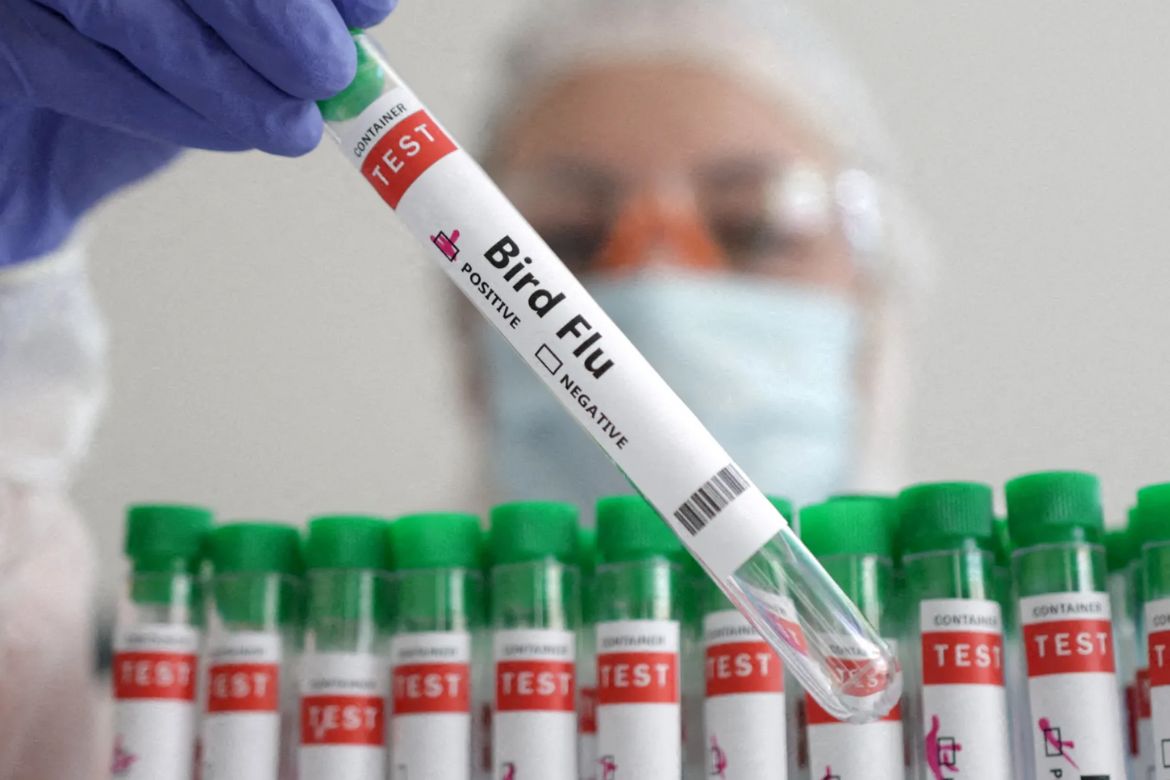In a troubling trend that carries both global and regional implications, the number of bird flu outbreaks in mammals has more than doubled in 2024, raising alarm over the increasing risk of animal diseases spilling over into humans. The warning comes from the World Organisation for Animal Health (WOAH) in its inaugural global health report—marking a sharp rise in zoonotic threats worldwide.
📈 Outbreaks on the Rise: A Wake-Up Call for the Middle East and Beyond
According to WOAH, 1,022 mammalian outbreaks of bird flu were recorded across 55 countries in 2024, a dramatic increase from 459 the previous year. Nearly half of these diseases have zoonotic potential, meaning they can jump from animals to humans—amplifying concerns for the Gulf region, where livestock trade, poultry farming, and cross-border animal movements are integral to both culture and economy.
The causes are interlinked and escalating:
- Climate change is altering migration patterns and wildlife contact zones.
- Global animal trade is accelerating interspecies disease transmission.
- A 5% global dip in livestock vaccination rates between 2020 and 2022 left millions of animals vulnerable.
🌍 “One Health” Under Threat: What Experts Are Saying
“The spread, prevalence and impact of infectious animal diseases is changing,” said Emmanuelle Soubeyran, Director-General of WOAH. “International cooperation and equitable access to vaccines are now more crucial than ever.”
The rise of diseases like bird flu, peste des petits ruminants (PPR), and African swine fever in new areas—including Europe and South Asia—underscores the fragility of global animal health systems. Gulf countries, which heavily rely on imported livestock and have dense urban-animal interfaces, are especially at risk of cross-species infection events.
🦠 MERS Resurfaces in the Kingdom
Closer to home, the World Health Organization (WHO) has reported nine new MERS cases in Saudi Arabia, two of which were fatal. Disturbingly, most patients had no known contact with camels, the traditional reservoir of the virus. Since 2012, MERS has caused 2,627 confirmed cases and 946 deaths, with Saudi Arabia accounting for 84% of them.
The absence of direct animal exposure in recent cases hints at possible community transmission—a red flag that Gulf public health authorities are now closely monitoring.
🐄 From Poultry to Pets: Bird Flu’s Expanding Host Range
The virus is no longer just a threat to poultry. Bird flu has now infected:
- Cattle in the U.S., affecting nearly 1,000 dairy herds across 17 states.
- Household pets like dogs and cats, and wild rats—raising concerns about urban spread.
- Larger mammals such as sea lions, minks, polar bears, and even tigers have suffered die-offs since 2022.
These cross-species infections increase the risk of genetic mutation—the kind that could one day enable human-to-human transmission.
🌡️ The Silent Spreaders: Antibiotic Resistance on the Rise
Another invisible crisis: antimicrobial resistance (AMR). Overuse of antibiotics in livestock has given rise to superbugs, threatening to undermine global food security and healthcare. WOAH projects that by 2050, AMR could impact 2 billion people. While Europe has reduced antibiotic use, misuse remains prevalent globally, including in developing markets.
Javier Yugueros-Marcos, head of WOAH’s AMR unit, emphasized:
“Preventive care, not indiscriminate antibiotic use, must be the new standard.”
🔍 What Needs to Be Done – And Why the Gulf Must Pay Attention
Health experts worldwide—and particularly in zoonotic hotspots—are calling for a comprehensive One Health approach that integrates animal, human, and environmental health. Key recommendations include:
- Expanding surveillance across farms, wildlife, and urban interfaces.
- Boosting vaccinations for poultry, cattle, and vulnerable workers.
- Monitoring viral mutations in real time.
- Coordinating global data sharing through WHO and WOAH networks.
For the Gulf region, where food imports, livestock movement, and desert-wildlife interactions are all part of daily life, the urgency to act is real. A regional outbreak could easily escalate into an international health emergency.
⚠️ Why This Matters to Every Gulf Resident
- Food security is at stake: Over 630 million birds have been culled globally in bird flu responses over the past 20 years, affecting poultry supply chains.
- Ecosystem stability is under threat: Die-offs in wildlife—penguins, seals, and migratory birds—could create cascading biodiversity losses.
- Pandemic risk is mounting: A single viral mutation could unlock the next human health crisis.
✍️ Final Word from The Gulf Talk
The lines between animal and human health have blurred. With bird flu now infecting cattle, pets, and wildlife, and with MERS still present in the region, the risk to human health can no longer be ignored.
The Gulf must invest in surveillance, enforce biosecurity, and champion international cooperation—not just for public health, but to protect economies, food systems, and regional resilience.
The next pandemic may not come from a lab or a faraway forest—it may come from the barn next door.



